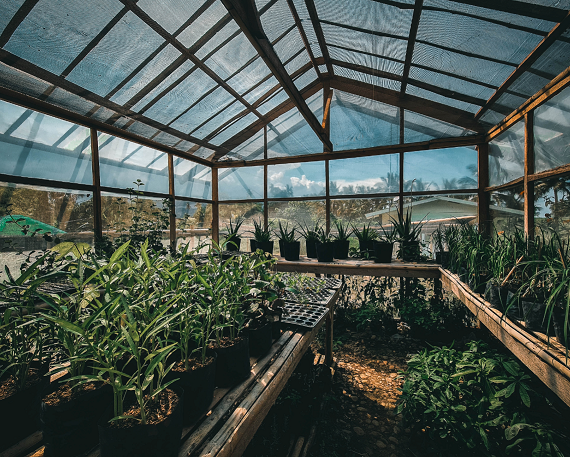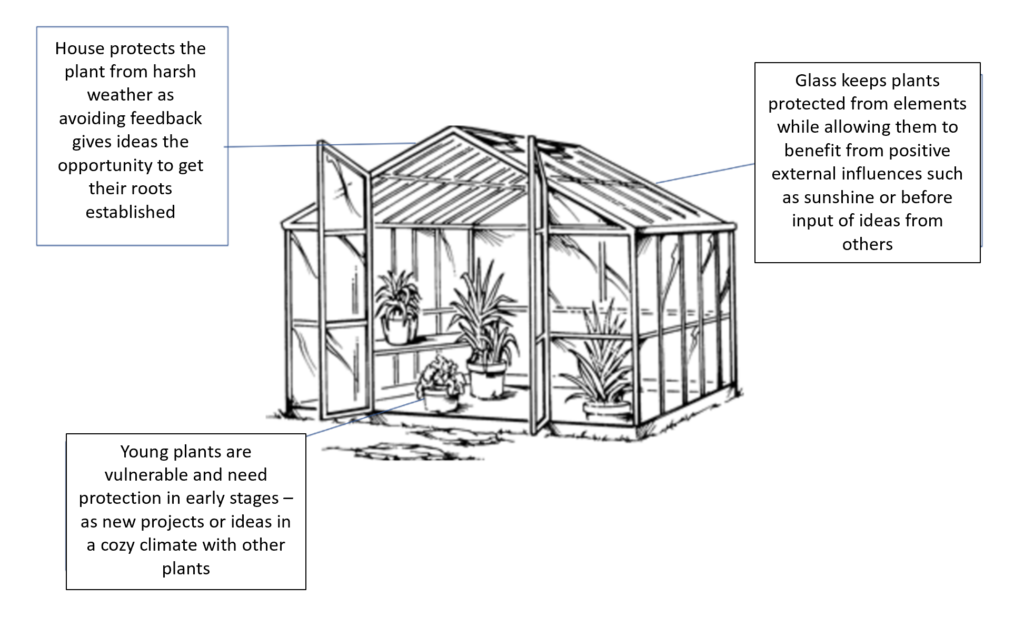
There’s something in the air tonight.
Heard this expression before? It alludes to something encouraging people to behave in a certain way. It’s not easy to see, although people’s actions give you a clue. And you certainly can feel it.
Well the ‘it’ is the environment – and there are many things that influence the environment at work, which in turn influences people’s openness to being creative. Let me explain.
If we think of creativity as being the act of creating new things, then we would see people being creative when they are:
- Attempting to solve a problem in a different way;
- Looking for new ideas in different places;
- See differences or similarities between two completely random ideas.
- Open to asking naïve and seemingly stupid questions; or simply by
- Taking a risk.
Creating an environment for creativity is a bit like setting up the greenhouse. You create this structure, this environment, so that seedling plants get the sunshine and water that they need as well as protection from harsh environmental conditions. (As illustrated in the image below).

How you feel in any environment will influence how you behave. Let’s have a look at behaviours.
Leadership behaviours
As a leader you want to create an environment where people feel safe to explore different ideas and approaches to solving a problem. In a creative work environment, your team members will be curious, ask lots of questions and seek out new information. They will experiment, with failure being recognised as a learning point from which they capture knowledge and continue with the problem-solving process. Failure should not be seen as fatal. With a need to solve increasingly difficult problems, your team will benefit from an environment where collaboration and continuous learning is the normal way they work.
Team member behaviours
Behaviours that build a great climate for creativity include helping each other, seeking help when you need it and rethinking or reframing a problem so that it can be viewed differently. These behaviours often happen together and are typical of a team working in a collaborative manner. While new ideas can be discovered accidentally most will come out of a process that is intentional and deliberately undertaken.
How challenges stimulate creative thinking
Many things influence the work environment. The nature of work undertaken and the types of challenges faced will reveal areas where creative thinking skills are particularly useful. Facing a problem could be a catalyst for the application of problem-solving skills. Indeed, solving problems is one of the characteristics that often make a job valuable.
Solutions to problems often emerge through discussions with colleagues about the source of the problem and possible ways forward. Challenging problems help your team develop a range of skills, and if they are successful in solving a challenging problem, they receive a wonderful sense of accomplishment.
You’re a role model
As a leader and coach your behaviour is key. Your team will watch you closely and are likely to model your behaviours. If, for example, you track trends, are curious, and spend time exploring different ideas, then your team are likely to copy you. Offering encouragement and resources signals support for new ways of doing things. As a role model, your approach should be to empower rather than to instruct. Always aim to offer support first and advice second.
Autonomy is important for ownership
Giving your team members freedom and autonomy in how they undertake their work is very important for creativity. As a leader, your relationship with your team members and their positive attitudes towards new ways of working is a key influencer on their willingness or openness to exploring new ideas. Resist the urge to meddle or micro-manage in their activities and give praise and feedback to encourage further exploration of an idea. Your goal should be to empower them to make decisions. And listening, of course, is very important too.
Along with autonomy it’s important for you as a leader to remove those things that may limit your team’s capacity to undertake their work. What’s the culture like in your organisation to investing in not-yet-approved ideas? And is there enough time to play with these ideas and for ideas to gestate?
Wrapping it up
If you want to build a work environment where creativity flourishes, think about the conditions essential for new ideas to flourish. These include a safe place where new ideas can be explored without harsh criticism, where there is positive input from others and a cosy, collegial environment. Encourage behaviours such as asking questions, looking for answers in unusual places and taking risks.
If you create the right conditions many new ideas (or plants) will establish stronger roots, before they are exposed to tougher, real world conditions.
References